As an Amazon Associate, I earn from qualifying purchases with no additional costs for you.
Since Texas is the second largest U.S. state, it’s no surprise that it contains vast resources of rocks and minerals. From the Texas deserts to the forests, there are plenty of rocks and minerals that exist all over this state, as you’ll find out in this informative article.
The Lone Star State contains these common rocks and minerals:
- geode,
- agate,
- petrified palm wood,
- jasper,
- fossil,
- flint,
- silver,
- turquoise,
- topaz,
- quartz,
- barite,
- and pyrite.
There’s no doubt that the Lonestar State’s diverse landscape contains many treasures, but finding them without guidance is like trying to find a needle in a haystack. Collect all the best rocks and minerals from Texas using this rockhounding guide and its locations.
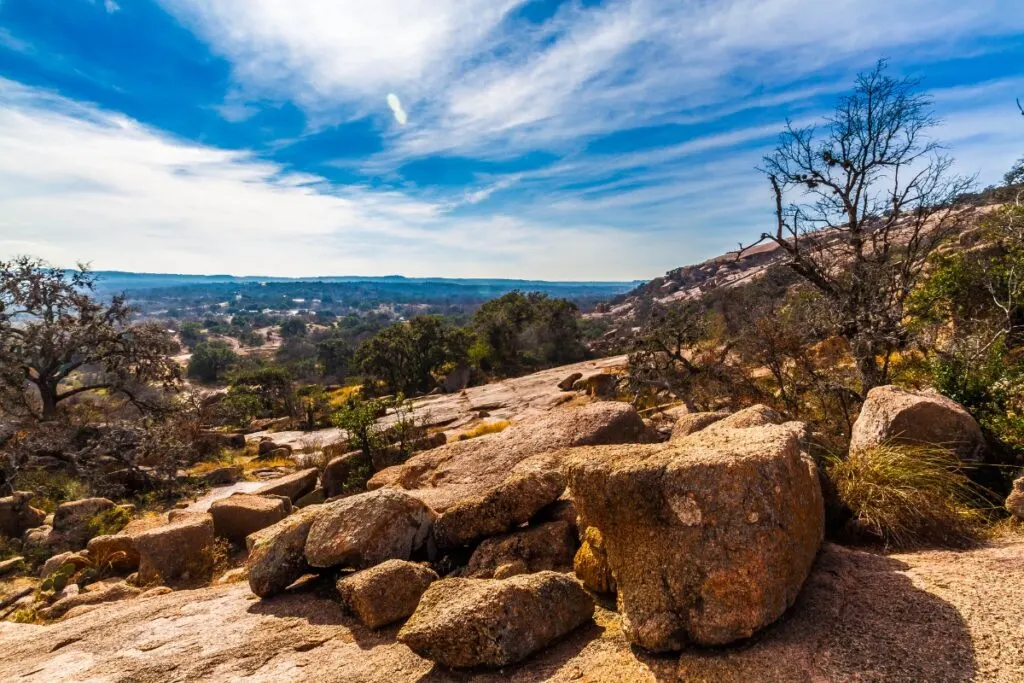
If you are interested in checking out the best rockhounding tools you can find them by clicking here (Amazon link).
What Rocks Are Found in Texas
There are all kinds of collectible rocks in the Lone Star State, such as:
Agate

| Location | GPS Coordinates |
|---|---|
| Glass Mountains | 30.434962, -103.108839 |
| Big Bend | 29.478601, -103.684961 |
| Lobo Valley | 30.923544, -104.792524 |
| Bishop Ranch | 30.147729, -104.046785 |
| Rio Grande | 26.353455, -98.795177 |
| Gatesville | 31.429061, -97.739746 |
| Balmorhea Lake | 30.961639, -103.728278 |
If you enjoy collecting different types of agates, you’re in for a treat in Texas! In the Lone Star State, you can collect moss, plume, turritella, Rio Grande, Balmorhea blue, and Texas bouquet agates.
Because agates are bountiful in this state, rockhounds of all skill levels are able to collect these colorful rocks with ease.
Agates exist in many areas of Texas, especially the west and south regions. Check out Big Bend, Lobo Valley, and Bishop Ranch for high-quality agates.
Geode
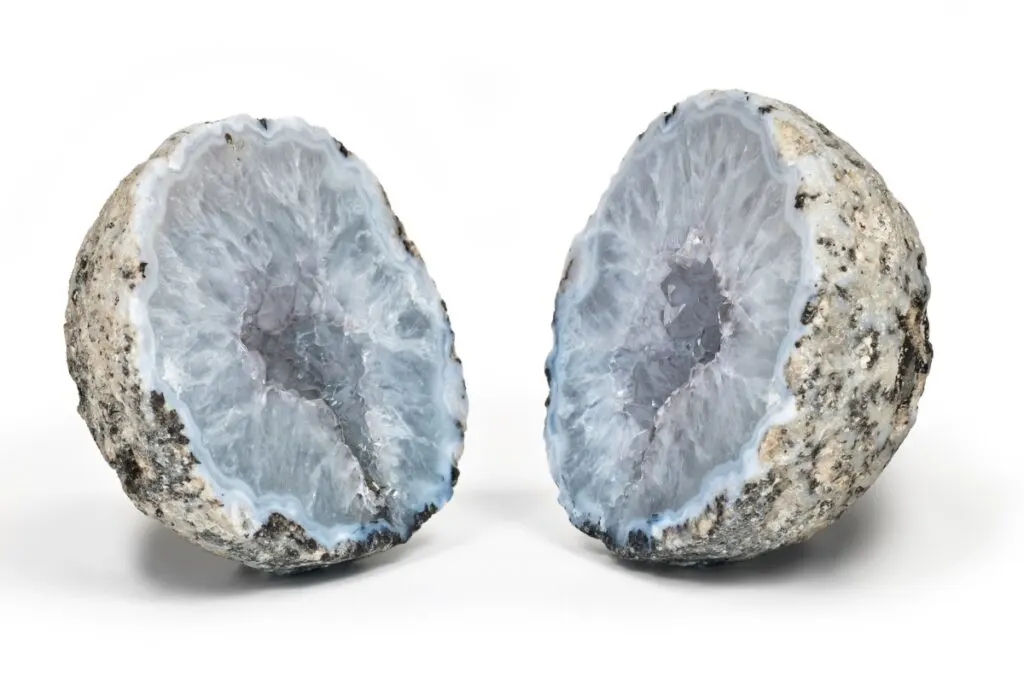
| Location | GPS Coordinates |
|---|---|
| Van Horn | 31.035121, -104.824050 |
| Lampasas | 31.067407, -98.201361 |
| Travis County | 30.376395, -98.089939 |
| Alpine City | 30.360431, -103.640864 |
| Big Bend | 29.277558, -103.723413 |
| Rio Grande | 26.353455, -98.795177 |
| Hudspeth County | 31.358626, -105.875847 |
Fortunately, Texas is a great place to find geodes filled with all sorts of stones or crystals, including agate, celestite, calcite, jasper, quartz, barite, blue topaz, and amber.
While the largest geodes are found in the western areas of the state, these rocks are scattered everywhere in Texas, so keep an eye out no matter where you go.
For beautiful geodes, swing by Van Horn, Alpine City, and Big Bend. Some of the central areas of the state, such as Travis County, also contain some lovely geodes.
TIP: Even though there is a scarcity of geodes in Texas, you can still find specimens throughout its borders. Findo ut more below:
Guide: 10 Best Locations to Find Geodes in Texas
Petrified Palm Wood
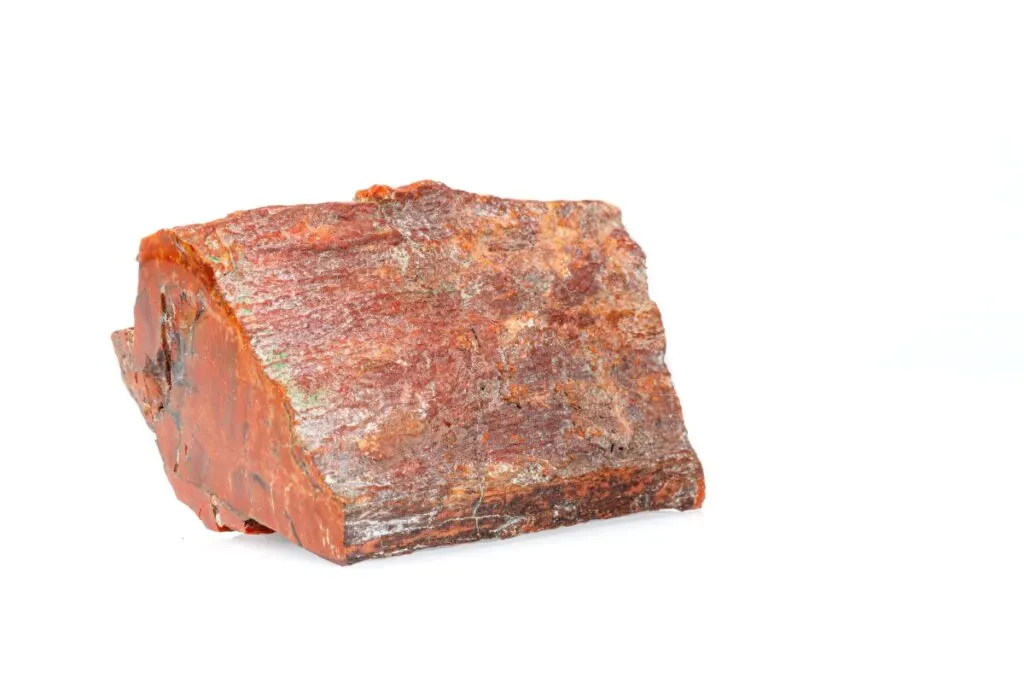
| Location | GPS Coordinates |
|---|---|
| Lake Livingston | 30.783594, -95.181301 |
| Camden & Chester | 30.913814, -94.667675 |
| Grimes County | 30.587992, -96.118556 |
| Freer | 27.883427, -98.632374 |
| New Caney | 30.161609, -95.223044 |
| Austin | 30.304977, -97.893149 |
The official state stone of Texas is petrified palmwood, so naturally, it’s a desirable find in the rockhounding community. This rock is considered one of the most beautiful fossils due to its spotted pattern, and because Texas was a lush forest millions of years ago, there’s plenty of it to be found in the state.
To collect petrified palm wood, you’ll want to stay near the eastern and central parts of Texas, including Lake Livingston, Austin, and Grimes County.
Jasper
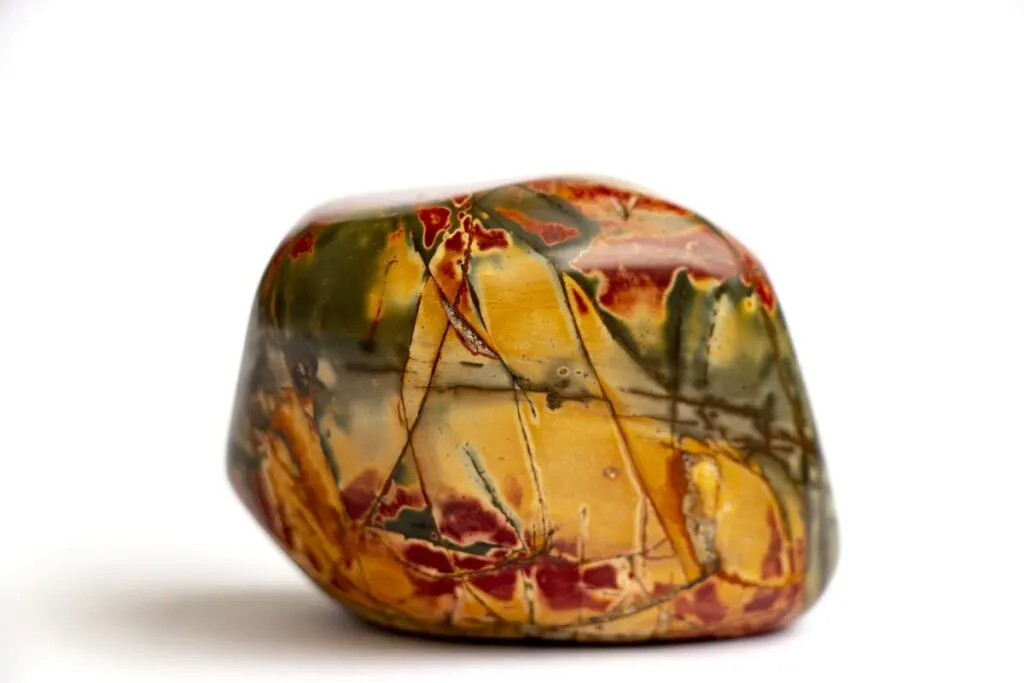
| Location | GPS Coordinates |
|---|---|
| Glass Mountains | 30.434962, -103.108839 |
| Eagle Pass | 28.677153, -100.474019 |
| Rio Grande | 26.353455, -98.795177 |
| Chinati Mountains | 29.904445, -104.463592 |
| Falcon Lake | 26.818720, -99.182141 |
| New Caney | 30.161609, -95.223044 |
Any area where you find agates in Texas is highly likely to have jaspers as well. Usually, you’ll be able to collect jasper from almost anywhere in the state, especially the western and eastern areas.
Collect gorgeous Texas jaspers from the Glass Mountains, Chinati Mountains, and Falcon Lake. Eagle Pass and the Rio Grande are also known for their jaspers.
Fossils
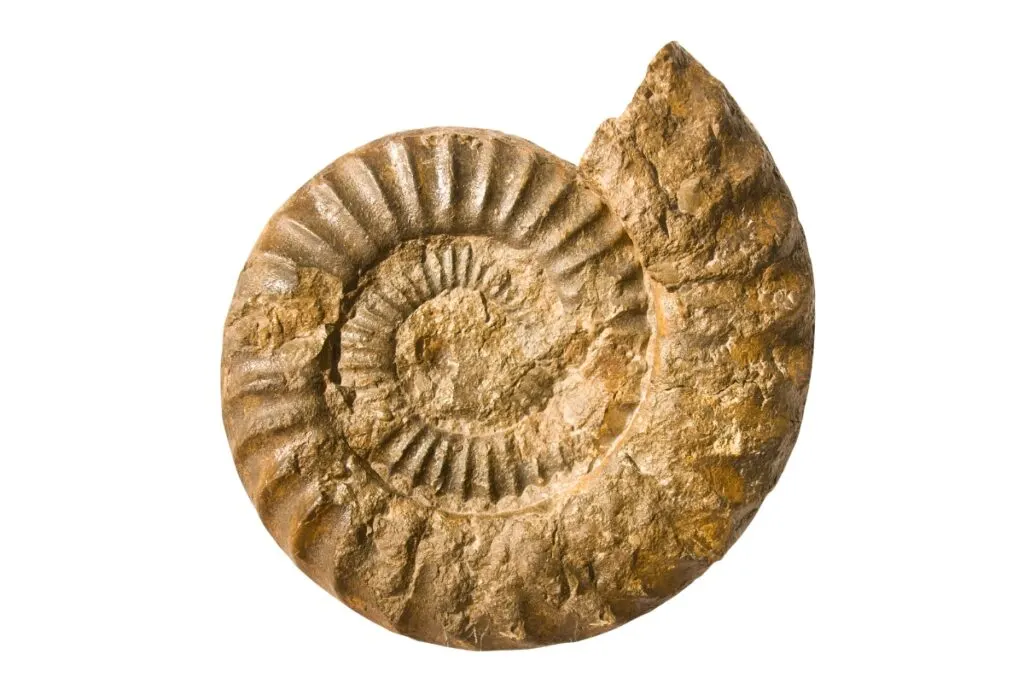
| Location | |
|---|---|
| Mineral Wells Fossil Park | 32.826210, -98.191235 |
| Lake Bridgeport | 33.211723, -97.833174 |
| Midlothian | 32.483241, -97.025047 |
| Pecos River | 29.707396, -101.351817 |
| Post Oak Creek | 33.624369, -96.614458 |
| Lake Whitney | 32.010267, -97.455983 |
Even though North Texas doesn’t offer a lot for rockhounds, it makes up for its lack of colorful rocks and shiny minerals with fossils. The northern areas of the state contain Megalodon teeth, trilobites, corals, leaf prints, crinoids, and dinosaur bones.
Minerals Wells Fossil Park is one of the best places to look for all sorts of fossils, but you can also stop by Lake Bridgeport, the Pecos River, and Lake Whitney for interesting Texas fossils.
Flint
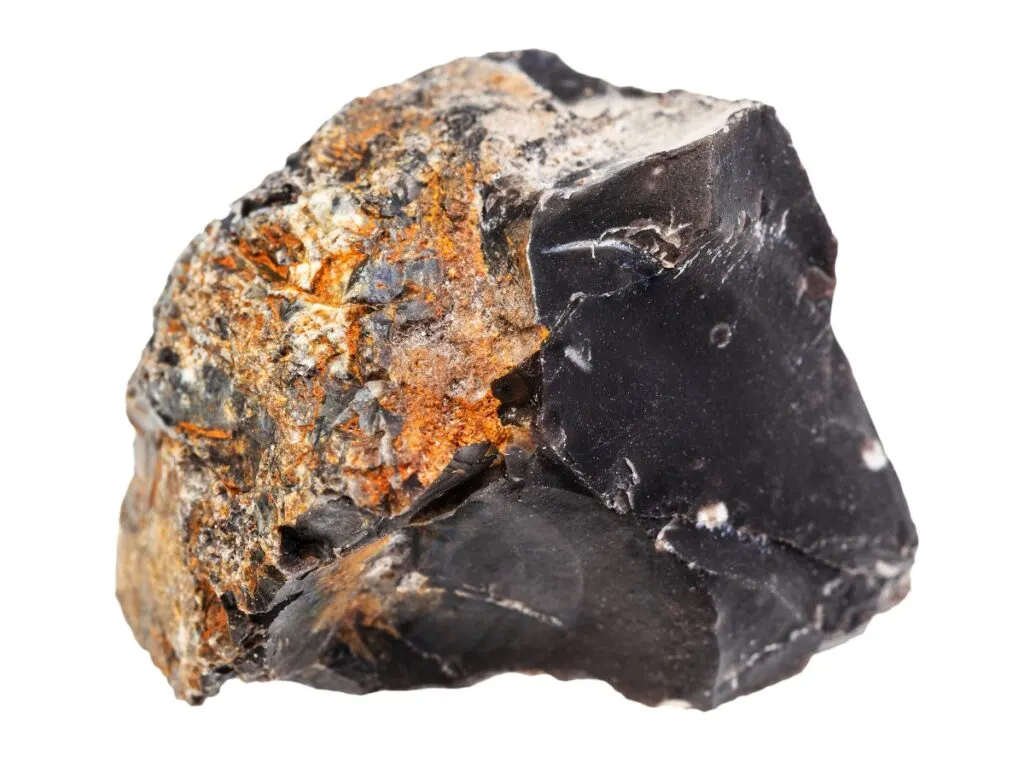
| Location | GPS Coordinates |
|---|---|
| Hinton Creek | 31.014064, -99.066589 |
| Plum Creek | 35.632255, -101.762098 |
| Lake Merideth | 35.602809, -101.668499 |
| Hayes County | 30.070607, -98.081550 |
| Smith County | 32.447876, -95.461640 |
| Palo Duro Canyon | 34.629965, -100.946689 |
There are quality flint and alibates flint specimens near the Texas Panhandle. You can also collect chert in this state, but it’s not as common as flint.
Hinton Creek is one of the best places to find chert, and for flint, Plum Creek and Lake Merideth should be your first stops.
Recommendation box: All tools and equipment you need for rockhounding and rock identification* (Amazon links):
1. Estwing Rock Hammer – Light, comfortable, and extremely durable hammer.
2. Estwing Geologist Pick – Classic and the most trusted paleo pick in the world.
3. Finder 12-inch Chisels – Heavy-duty chisels set with hand protection.
4. Mini Handle Shovel – This is a great tool for digging deep in the dirt.
5 Ironclad Utility Work Gloves – Breathable, but they also protect the areas requiring them most.
6. 3M Safety Glasses – Comfortable and efficient goggles for rockhounding.
7. Convoy 8+ UV Light – 365nm UV LED flashlight with a patented glass filter.
8. Wesley’s Jewelers Loupe – High magnification options (30X and 60X) with carrying case.
9. Mohs Hardness Kit – A specially designed kit for rockhounds
*All recommended products are personally tested and regularly used by experts from this website.
What Minerals Are Found in Texas
The Lone Star State has many types of colorful and unique minerals, including:
Silver
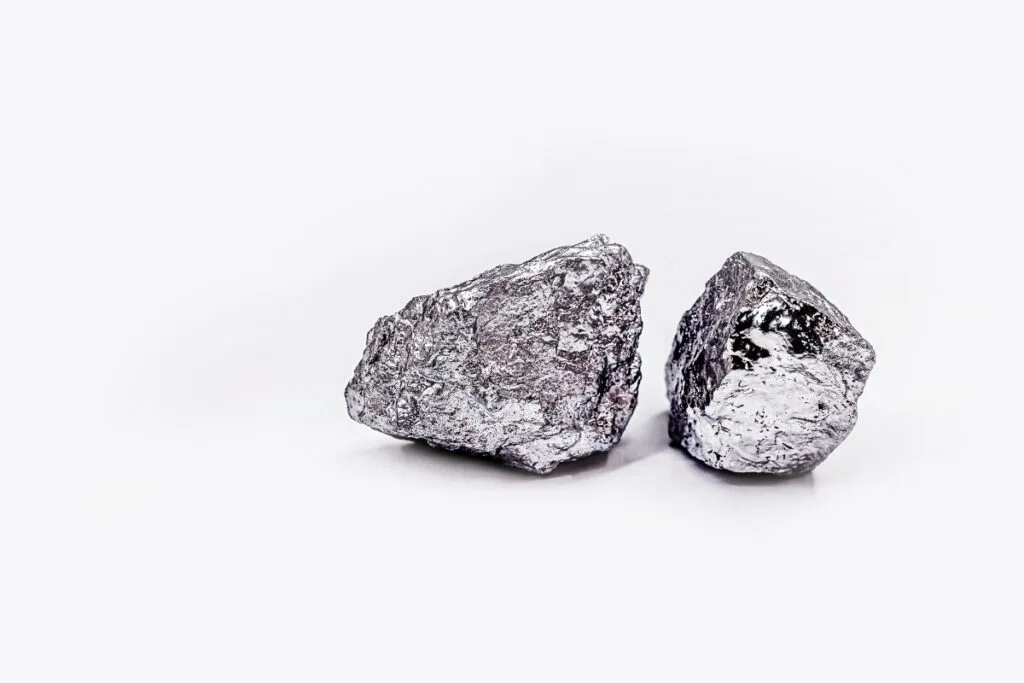
| Location | GPS Coordinates |
|---|---|
| Brewster County | 29.950313, -103.550955 |
| Jackson’s Creek | 33.221732, -94.301707 |
| El Paso | 31.827047, -106.542697 |
| Presidio County | 29.699486, -104.502304 |
| Hudspeth County | 31.006163, -105.466607 |
| Big Bend | 29.160875, -103.424131 |
| Culberson County | 31.095560, -104.878409 |
Did you know that silver has been mined in Texas for over three centuries? Silver has played an important role in the state of Texas and its development ever since the Spanish arrived in the late 1600s. Due to its abundance and importance, this state nominated silver as its official state precious metal of Texas.
Look for this shiny metal in Brewster County, Presidio County, and Hudspeth County. Usually, you’ll have the most luck in the western areas of the state for this mineral.
Turquoise
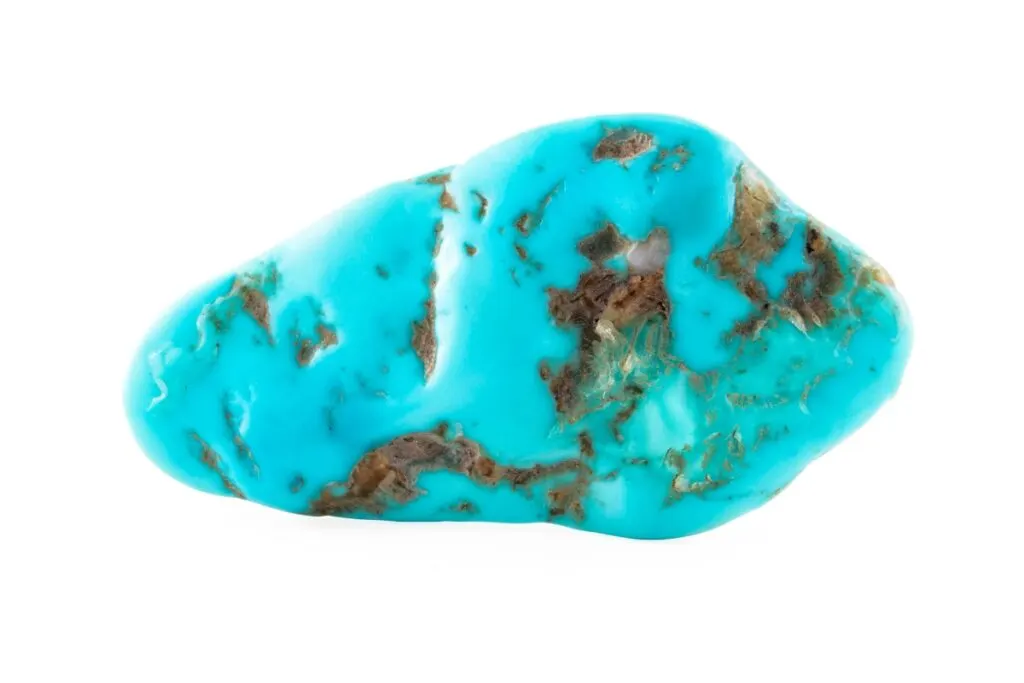
| Location | GPS Coordinates |
|---|---|
| Van Horn | 31.033945, -104.834007 |
| Culberson County | 31.114373, -104.205497 |
| Carrizo Mountains | 31.012470, -104.932101 |
| Sierra Blanca | 31.179750, -105.368858 |
| Hudson | 31.322997, -94.791380 |
One reason why turquoise jewelry is so popular in Texas is because this mineral is naturally plentiful in this state. Large, stunning pieces of turquoise are often collected from Van Horn and its surrounding areas.
However, it’s important to note that while the turquoise from this state is lovely, it is not comparable to the high-quality pieces from Nevada, Arizona, or other states known for their turquoise.
Turquoise is usually found in the west Texas regions, including Culberson County, Van Horn, and the Carrizo Mountains.
Topaz
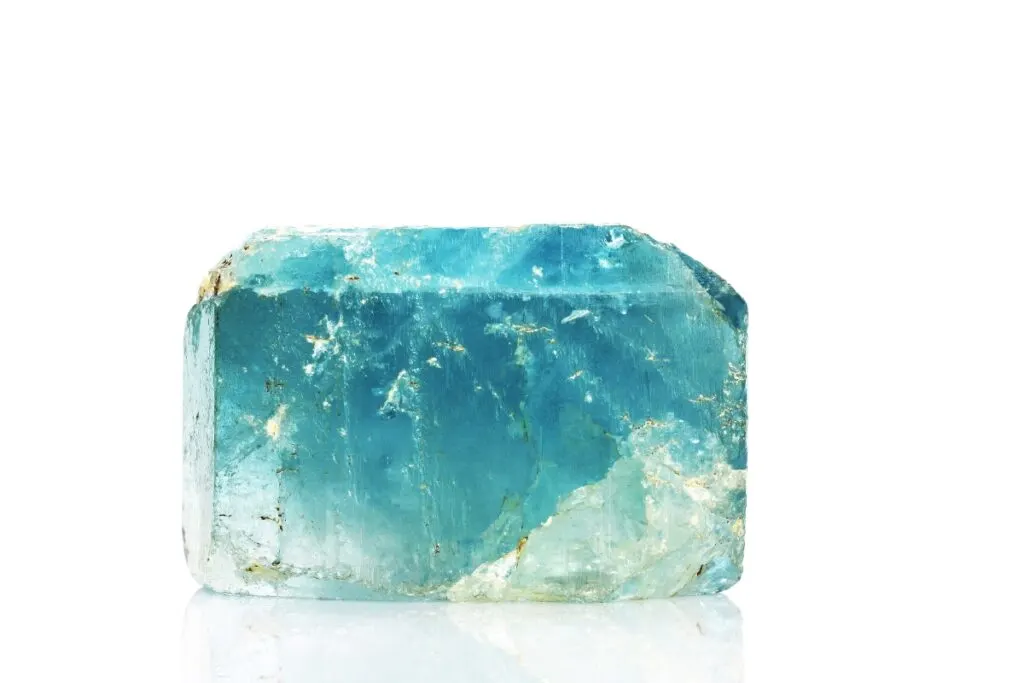
| Location | GPS Coordinates |
|---|---|
| Lindsay Ranch | 30.814038, -99.265537 |
| Bar M Ranch | 30.764141, -99.322699 |
| Streeter | 30.763424, -99.379709 |
| Mason County | 30.721576, -99.225636 |
| Llano County | 30.741470, -98.490362 |
If you want to collect blue topaz, Texas is one of the only places in the world where you can find it! This rare mineral is a bit challenging to find, but it exists in multiple areas of the state. Rockhounds also bring home colorless topaz from this state, but blue topaz is by far the more popular variant.
While you can search for it on your own, there are some ranches that are open to the public for topaz hunting, such as Lindsay Ranch and Bar M Ranch.
Topaz is most common in the central areas of Texas, such as Mason County and Llano County. You can also check out Lindsay Ranch, Seaquist Ranch, and other Texas topaz ranches that are open to the public and rockhounds.
TIP: To have a higher chance of finding topaz specimens in nature, you first need to understand how this mineral forms and explore the familiar environments where it is found.
Where to Find Topaz: Best Environments & Locations (USA)
Quartz
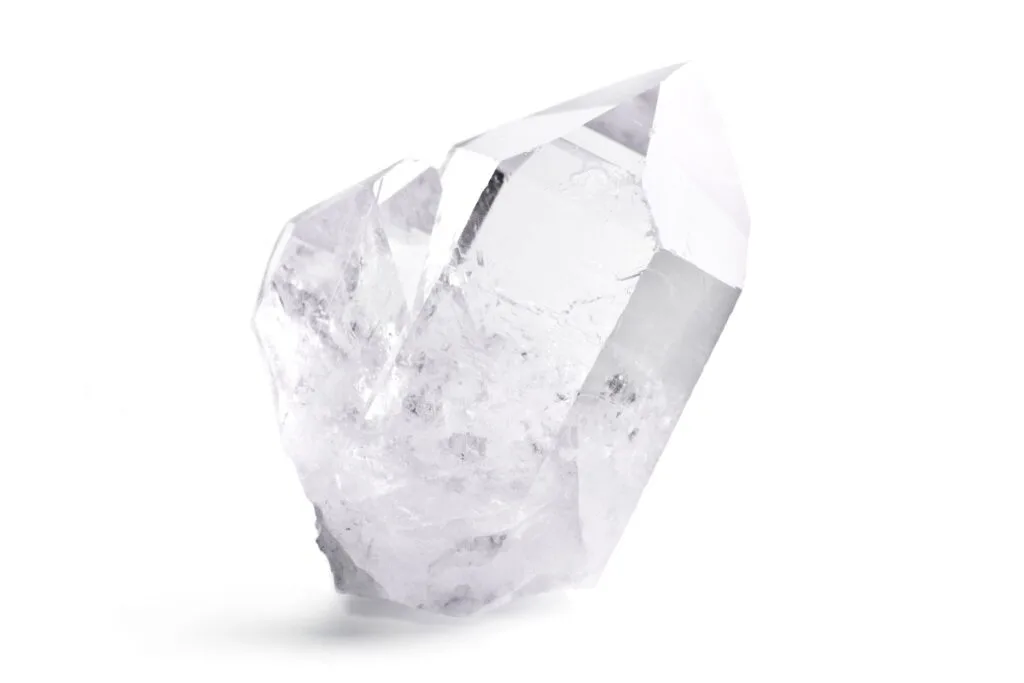
| Location | GPS Coordinates |
|---|---|
| Miller Mountain | 30.798419, -98.641065 |
| Glass Mountains | 30.435036, -103.109140 |
| Quitman Mountains | 31.149058, -105.496475 |
| Mason County | 30.714492, -99.224262 |
| Alpine | 30.347692, -103.667128 |
| Llano County | 30.708415, -98.655157 |
There are all kinds of quartz crystals that rockhounds pick up from the Lone Star State, including rose quartz, smoky quartz, amethyst, opal quartz, and clear quartz. Additionally, quartz is widespread throughout all of Texas, so you won’t need to travel to a specific area to collect this mineral.
The mountains of Texas produce some gorgeous quartz crystals, so be sure to check out Miller Mountain, the Glass Mountains, and the Quitman Mountains.
Barite
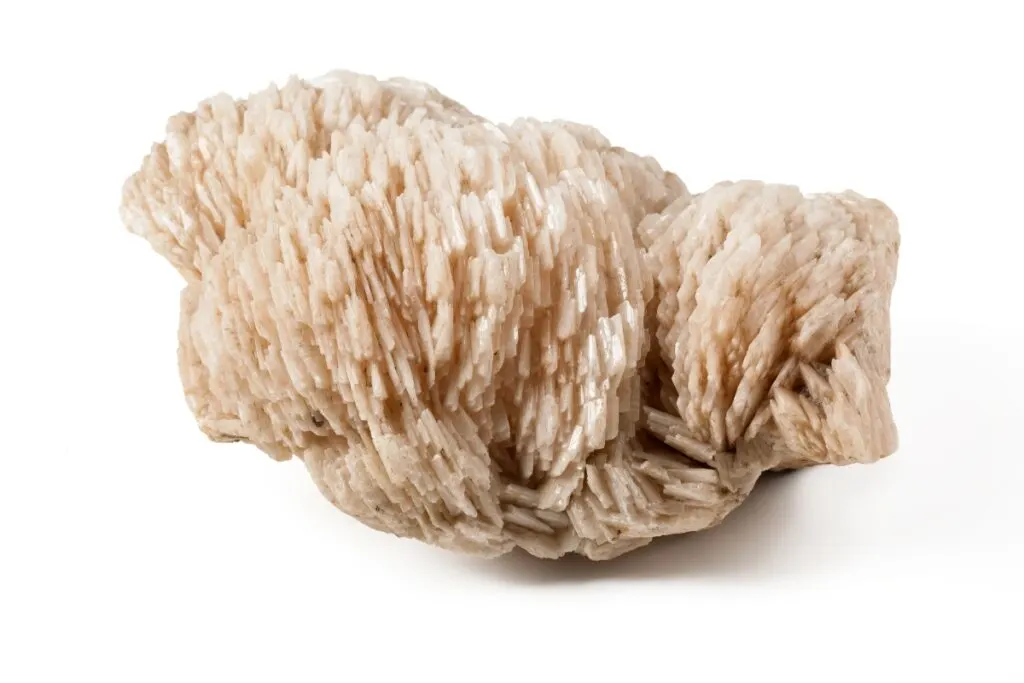
| Location | GPS Coordinates |
|---|---|
| Seven Hearts Gap | 31.255213, -104.508857 |
| Dog Canyon | 29.623058, -103.112631 |
| Willow City | 30.400306, -98.700953 |
| Pecos River | 29.707396, -101.351817 |
| Plata Verde Mine | 30.877067, -104.922246 |
In south and west Texas, rockhounds can collect some beautiful barite specimens from limestone and other sedimentary rocks. Surprisingly, this mineral is usually found on its own in Texas, but occasionally, you might see it with quartz or malachite.
For barite crystals, swing by the Pecos River, Plata Verde Mine, or Willow City. Dog Canyon and Seven Hearts Gap are two other popular locations for this mineral.
Pyrite
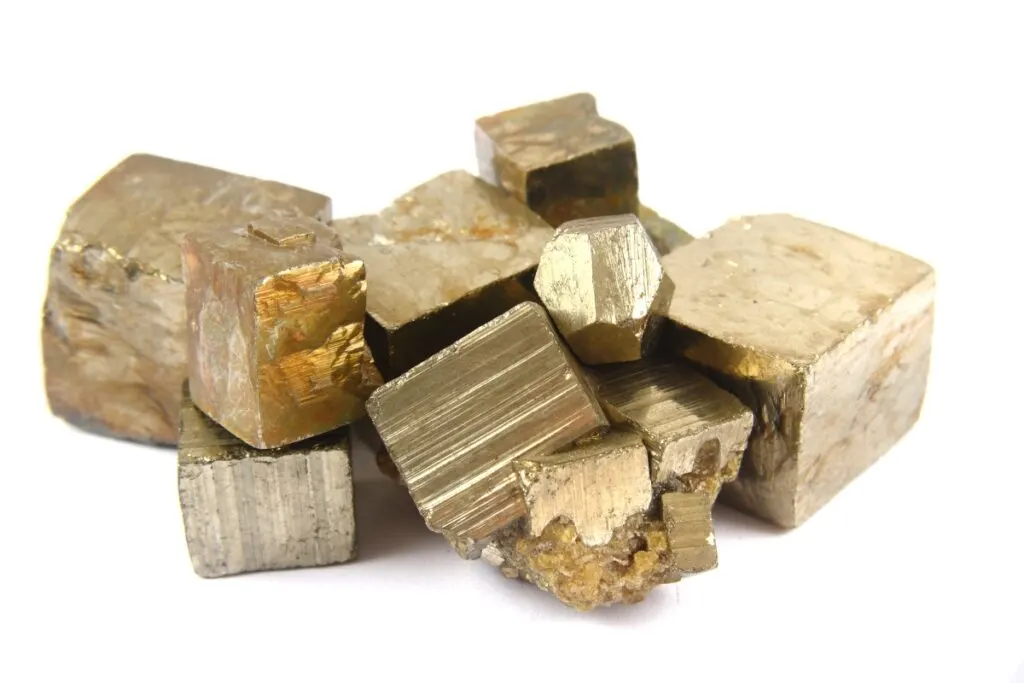
| Location | GPS Coordinates |
|---|---|
| Alvord | 33.353532, -97.694805 |
| Bonanza Mine | 31.187092, -105.500942 |
| Chinati Mountains | 29.904482, -104.463764 |
| Douglass | 31.667406, -94.880684 |
| Ellis County | 32.444704, -96.921841 |
While there are small amounts of gold in Texas, you’re much more likely to find pyrite. Pyrite is one of the few minerals you can collect from North Texas, and it sometimes appears in the form of cubes.
Visit the Chinati Mountains, Douglass, or Ellis County for pyrite cubes and crystals.
TIP: Gold prospecting in Texas is more than just a hobby; it’s a pursuit, a journey that will take you deep into the heart of Texas. Find out more below:
Gold Prospecting in Texas: 10 Best Locations & Laws
FAQ About Common Rocks & Minerals in Texas
Texas is a large state, and it has many more rocks and minerals to offer rockhounds, such as:
What Rare Rocks Can You Find in Texas
Texas actually has quite a few rare rocks, such as geodes, fossils, agates, jaspers, serpentines, soapstones, agatized wood, flint, obsidian, and petrified palm wood.
Agates, jaspers, and fossils are the most abundant rare rocks in this state, and you can collect many different types of agates. As the state stone of Texas, it makes sense that petrified palm wood is a popular treasure among rockhounds, and you can find many high-quality pieces in central areas of the state.
Because Texas is such a large state, there aren’t very many areas where you can collect multiple rare rocks at the same time. Instead, it’s best to find locations, like the ones listed above, for each rock, and then plan your trip accordingly.
What Rare Minerals Can You Find in Texas
The Lone Star State possesses some beautiful rare minerals, including amethyst, turquoise, diamond, opal, silver, gold, topaz, tourmaline, sphalerite, malachite, azurite, carnelian, cinnabar, fluorite, and pearl.
Of these minerals, the one that most rockhounds seek is topaz since it comes in blue, a rare color for this particular mineral. As a matter of fact, central Texas is one of the few places in the world where rockhounds can find blue topaz, so it’s no wonder collectors flock to this state just for this mineral.
If you want to collect many types of rare minerals, head on over to west Texas. If you’re looking for a specific mineral, take a look at the rockhounding locations listed above.
BTW: Do you want to know more about rock and mineral identification? The books listed below are the best ones you can find on the internet (Amazon links):
- Smithsonian Handbooks: Rocks & Minerals
- Gemstone & Crystal Properties (Quick Study Home)
- Ultimate Explorer Field Guide: Rocks and Minerals (National Geographic Kids)
What is the Most Famous Rock or Mineral Found in Texas
The main reason many rockhounds visit Texas is to collect the famous and rare blue topaz. Blue topaz only exists in a few places on earth, and central Texas happens to be one of those few places.
There are a few ranches in Mason County where rockhounds have had success collecting this gorgeous mineral, and you might also come across some colorless topaz or black tourmaline in this area.
Before you collect the state gem of Texas, always ensure you avoid private lands unless you have permission to enter and collect the mineral.
Mason County and its surrounding areas are the only places in Texas where you can find blue topaz. Check out some of the ranches in the area to begin your rockhounding journey.
Conclusion
As you can see, there are some amazing rocks and minerals that you can collect from the Lone Star State, such as blue topaz or petrified palm wood.
Don’t let the sheer size of this state unnerve you during your rockhounding journeys. All you need are the right locations and information to uncover all the rocks and minerals that the great state of Texas has to offer.
TIP: Texas is among the top locations you can go rockhounding in the United States. Check out the complete rockhounding guide in the article below:
Best Rockhounding Locations in Texas & What You Can Find
